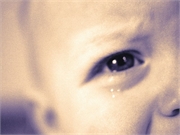Annual frequency of exposures decreased among children; highest rate seen for children aged 2
WEDNESDAY, Dec. 11, 2019 (HealthDay News) — From 2000 to 2016, there was a decrease in the annual frequency of ocular exposures associated with household cleaning products among children, according to a study published online Dec. 9 in Eye.
Alisha Kamboj, M.D., from Nationwide Children’s Hospital in Columbus, Ohio, and colleagues conducted a retrospective analysis of ocular exposures associated with household cleaning products using data from the National Poison Data System.
The researchers found that poison control centers in the United States received 319,508 calls for household cleaning product-related ocular exposures from January 2000 through December 2016, averaging 18,795 exposures per year. During the study period, there was a significant 28.8 percent decrease in the annual frequency of exposures. Per 100,000 U.S. residents, the rate of exposures was 28.4, 4.8, 4.2, and 4.2 among young children, older children, teenagers, and adults; the highest rate of exposure (62.8) was seen for children aged 2 years. The nonmiscellaneous product subcategories most commonly associated with ocular exposures were bleaches, wall/floor/tile cleaners, disinfectants, laundry detergents, and glass cleaners (25.9, 13.4, 10.8, 6.1, and 5.3 percent, respectively). Drain cleaners, oven cleaners, and automatic dishwasher detergents were associated with the greatest proportion of major medical outcomes (1.4, 1.1, and 0.4 percent, respectively).
“More recent advances in prevention practices and increased public awareness about the hazards of household cleaning substances may have contributed to the observed decrease in ocular exposures,” the authors write.
Copyright © 2019 HealthDay. All rights reserved.








